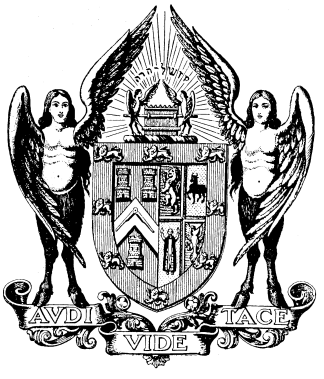FREEMASONRY
&
ANCIENT SYMBOLISM
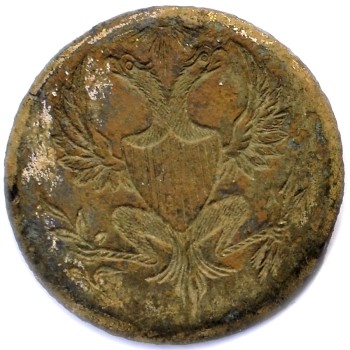
This Late 1790’s Masonic Button’s True Meaning,
I Believe is How
Both Religions could live in Harmony
LODGE SYMBOLS & REPRESENTATIONS
Masonry has three distinct levels of Proficiency. The Lodge’s candidates which are called, “Entered Apprentices” is considered a First Degree Mason. In Biblical terms this level represents the “ground floor” of King Solomon’s Temple. The Second Degree of Masons in a Lodge is known as, “The Fellow-Craft Apprentice;” this would represent the middle chamber of King Solomon’s Temple. Finally, a Lodge of Master Masons which is considered by their brethren as the holder of the secret knowledge and skilled arts. These Master Masons are known as, “Third Degree Mason,” or considered the Holy of Holies, and inner sanctum of Solomon’s Temple.
THE SYMBOLIC DEGREES OF FREEMASONRY
As the centuries went on there was a noticeable decline in the building of castles and cathedrals. This seems to have led to a decrease in the number of stonemasons. This led to a gradual admission of non-craftsmen into their midst until they outnumbered the original stone craftsmen. In the early years of Freemasonry, there were only two degrees that were generally practiced. The first was known as, “The Entered Apprentice.” The second was called, “Fellow-craft.” We know that Anderson’s Constitution of 1723 only refers to these two degrees in Masonry. In 1725, there appears to have been a change in guard or way of thinking to a more modern approach to fit the era. In 1725, the Grand Lodge of England began to allow it’s subordinate lodges to make Master Masons. This was a contrary idea to the old-style of rank within the lodges which recognized Fellow-Craft Masons as the masters of their trade. This new title was conferred upon an individual so he would now be looked upon as, “Master of a company.” The earliest known conferral of a Masters Degree in a formally charted lodge was in 1732.
Religion and Freemasonry
Even though religion has no partiality in Freemasonry admission, it is clear in the early Constitutions of Freemasonry that brethren were biased toward Christian teachings. In England, Masons were predominately Roman Catholic. This didn’t change until the Protestant reformation in the mid 16th century. In today’s times, Freemasonry is impartial to any particular religion or it’s teachings.
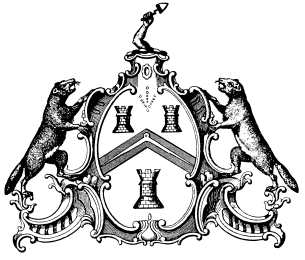 Freemason Company of Arms 1730
Freemason Company of Arms 1730
The first known appearance of the Freemason’s Grand Lodge Coat of Arms is found in 1730. It consisted of three castles with compasses and a chevron “V” in the center. The arms were derived from those of the Freemason’s Company of London, with the chevron shown plain instead of semicircular indentations. They believed that this coat of arms was an opportunity to promote Masonic emblems with deeper symbolism.
THE YORK GRAND LODGE 1725
The York lodge claimed its existence from Athelstan’s organization in 926, but formal written records didn’t start until 1705. In 1725, the York Lodge formed calling itself, “The Grand Lodge of All England.” It was located in York which was acclaimed the birthplace of English Masonry. Records indicate that the Grand Lodge of All England only controlled a few of the lodges in the York area, and then ceased all activity by 1792. This didn’t stop it’s subordinate lodges from operating into the early part of the 19th century. Some historical Mason scholars say that the York Grand Lodge’s members protested the abandonment of the Mason’s organizations old ways and did not open up to the changing structure of the new system of rank and procedure. What is interesting is that the York Grand Lodge regularly conferred the degrees of Knight Templar and the Holy Royal Arch as 4th and 5th degrees. This is how they connected these new degrees to Ancient York Masonry. Unfortunately, there appears to be some rivalry at the time with the Premier Grand Lodge which led to it’s downfall. Although the Grand Lodge of All England failed, it made a contribution to modern Freemasonry and allowed a bridge between the old and new fraternities in lodges.
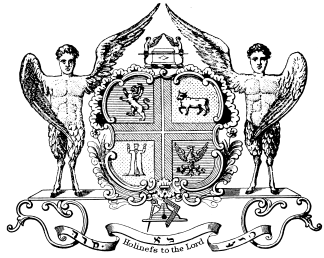 The Ancients Symbols Depicted
The Ancients Symbols Depicted
THE GRAND LODGE OF IRELAND 1730
The Grand Lodge of Ireland was formed in 1730, publishing its own Book of Constitutions. The Irish Grand Lodge also warranted a number of military lodges in the British regiments during the period of English colonial expansion.
Several of the early Irish lodges, as well as those attached to the British regiments are also known to have conferred the degrees of Royal Arch Mason and High Knight Templar.
THE GRAND LODGE OF SCOTLAND 1736
The Masonic lodges of Scotland are known to have admitted speculative members earlier than any other Masonic region of the British Islands. Ironically, Scotland was the last to constitute a Grand Lodge. The Canongate-Kilwinning Lodge, located in Edinburgh, first proposed the formation of a Grand Lodge in 1735. In that time frame, there were known to be in excess of 100 lodges in Scotland; many of them still primarily composed of operative stonemasons. Other crafts would soon be admitted in later years.
The Grand Lodge of Scotland was officially formed in 1736, having convened with the delegates of 33 Lodges. The Scottish lodges were numbered according to documentary evidence of the age of the Lodge. Controversy as to the age of some of these Lodges still persists.
THE ANCIENT GRAND LODGE OF ENGLAND 1751
The original name of this Grand Lodge (not to be confused with the Grand Lodge of 1717) was “The Grand Committee of the Most Ancient and Honorable Fraternity of Free and Accepted Masons According to the Old Institutions.” This lodge is also referred to as the “Atholl Grand Lodge,” reflecting the acclaimed history of the Dukes of Atholl having served as its Grand Masters.
Following the formation of the original Grand Lodge in London in 1717, that Grand Lodge created a heated controversy by initiating a number of changes which, in the opinion of many Masons, modernized the craft to excess. These “modern” lodges began to exclude the working man from lodge membership, catering, instead, to the aristocrats. Compounding the situation, Irish Masons residing in London were refused visitation in these lodges. Consequently, many lodges in England refused to affiliate with the Grand Lodge.
In consequence to the Grand Lodge’s aristocratic preference, in 1751, six independent lodges in London formed what was to become “The Most Ancient and Honorable Fraternity of Free and Accepted Masons According to the Old Institutions,” subsequently to be called, “The Ancient Grand Lodge.” Many Masonic scholars credit the “Antients” with much of the Masonic ritual, in use today.
Lawrence Dermott was elected the second Grand Secretary of this newly formed Grand Lodge in 1752. He is credited with assembling the administration for the Ancient Grand Lodge and also for writing “The Ahiman Rezon” (Hebrew for “A Help to a Brother”) in 1756. This document became the Constitution for the Ancient Grand Lodge and its subordinate lodges.
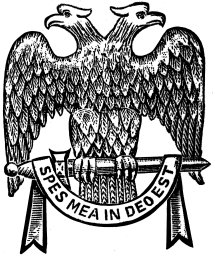
The Scottish Rite
It may be said of the Scottish Rite, that while the Blue Lodges teach a man to be true to his God, family, country and Brother Mason; the Scottish Rite teaches the same man to be true unto life – a much broader horizon.
The following material presents a condensed account of the Scottish Rite of Freemasonry. By all reliable accounts, the Scottish Rite originated in France as the result of the efforts of Andrew Ramsey, a Scotsman. Consequently, there are many references using the term, “Ecossais,” which in French means “Scotch” or “Scottish.” Hence, the references to the “Ecossais” Rite of Freemasonry will be simplified by using the name, “Scottish Rite.”
The lack of provable Masonic history leaves unanswered the obvious question as to why the Rite which originated in France during the English Pretender’s (James II) residence there, ultimately was called “Scottish.” It is, without any verifiable fact, claimed to have been authorized from Kilwinning in Scotland.
No one disputes the fact that Scottish Rite Masonry originated in France. However, one is quickly left to ponder why the French, being famous for their nationalism, could allow such a foreign name to be associated with a French creation. For a better understanding of this rite, a brief history lesson is mandated.
Let us examine a turbulent period of history of England and France, beginning in 1649. In this time frame, the Catholic Church had no significant quarrel with the more religiously neutral Masons. Protestantism, however, was battling to the death with Catholicism.
In the 17th century, the royal family of Scotland was the Catholic Stuart family. Out of that Scottish family came James VI, being the same person as James I, King of England. One can understand that Scotland, being the northern portion of the island of Britain, would want a certain union with England – IF Scotland could be the ruling influence.
The name of “James” became the dominant name in that portion of history. The influence of the Stuart cause through James II is referred to as “Jacobite,” from the Latin translation of “James.”
Many positions taken by Masonic historians are often put down as nonsense. Debate aside, these claims are often quite plausible and passionate. The central theme of the Stuart theories claims that the Stuart family tried to use the Masons as a vehicle for their plans. In those times, such was entirely possible; if not probable.
Many reputable Masonic historians dismiss all claims regarding the alleged Stuart connections to Masonry and any accounts which support such claims. Such references have led to the term, “Jacobite Freemasonry.” To repeat, Jacobite is a term loosely applied to followers of James II of England, (James VII of Scotland), and also the young Charles Edward Stuart, his grandson.
However, many readers will find fascination with the many documents such as diaries, letters, records, and poems which suggest the Stuart connection. Amidst the political turmoil of that time, one can easily imagine the need for manipulation, deceit and conspiracy to achieve the desired end. It is not entirely unlikely that the Stuarts made an insincere, but serious attempt to manipulate the Masons to their cause. In those times, such things regularly happened.
To continue the history lesson – in the year 1649, King Charles I of England was beheaded out of a civil war, while his queen and son Charles II were exiled to France. The ruling power was assumed by the House of Commons, under the leadership of Oliver Cromwell. At this time in history, the English Puritans were dictating the social norms of the English people. In this setting, the speculative Masons were still something of a “secret” society; there was then no centralized Masonic lodge power.
Living in exile, in France, Charles II allegedly secretly joined both the Catholic Church and the Masons; masquerading to the English population as a Protestant.
According to the Jacobite legend, with the aid of French Masons, who were Catholic, and the English Masons, who were Protestants, Charles II regained his father’s throne. Unknown until his death, Charles II had been secretly attempting to restore the Catholic Church in England. Charles II was to reign disgracefully for twenty-five years, dying in 1685 while receiving the last rites from a Catholic priest. Such is the legend.
Three years later, (1688) England was again in a state of revolt at the hands of the brutality of James II, the brother and successor to Charles II. Ultimately, James II fled to France, taking shelter at the Jesuits’ College of Clermont, in Paris – never to return to England.
The English protestants, however, installed Mary (the daughter of James II) along with her husband / cousin William of Orange; the couple is known in history as “William & Mary.”
During this time Freemasonry was growing in England while the sons of the fugitive, James II, were exiled pretenders to the English throne; living with the Jesuits in France.
Against the Stuart Masonic legend of Charles and James II, is the fact that the earliest known Masonic Lodge in France was formed in 1725.
Enter now the reputed individual who is credited with the inspiration of “The Ancient and Accepted Scottish Rite.” This was the chevalier Ramsay. By chance, Ramsay was to play a major role in the history of Freemasonry in the 18th century. Ramsay’s motives, however, are highly worthy of scrutiny.
Andrew Michael Ramsay was born in Ayr, Scotland in 1681. Ramsay was a brilliant young Scotch Presbyterian; educated at Edinburgh University.
In 1709 Ramsay served as tutor to the children of the Earl of Wemyss. However, Ramsay became involved in the religious turmoil in Scotland. He consequently moved to France, by way of Holland.
Ramsay became a skilled socialite and politician. He was able to gain great wealth, and converted from Protestantism to Catholicism. Ramsay was only twenty years old when James II fled to Paris.
Ramsay became an enthusiast of the tenets of the mystical theology, then widely popular. In 1710, Ramsay lived for six months with the family of the mystical Archbishop Fenelon of Cambray. Under the patronage of Archbishop Fenelon, Ramsay converted to Roman Catholicism.
Some time later, Ramsay secured an appointment as the preceptor to the Duc de Chateau-Thierry; subsequently to the Prince de Turrenne. For Ramsay’s services he was subsequently rewarded with a French knighthood; a chevalier (knight) of the Order of St. Lazarus. Ramsay subsequently is remembered in Masonic history as “… the Chevalier Ramsay.”
Ramsay’s greatest service was to James III (son of James II), also remembered as the “Old Pretender.” Ramsay was called to Rome by James III, the individual who would otherwise have been King James III of England, had his father, James II, not been deposed from the throne and exiled.
The chevalier Ramsay was selected as a tutor by the English heir-in-exile, undertaking the education Jame’s two sons, Charles Edward, and Henry Stuart. Charles Edward (the Young Pretender) is also remembered in history as the “Bonnie Prince Charlie.”
James III pursued the return of both the Scottish and English crowns to his family and to restoring the authority of the Roman Church in England. James was focused on either securing the crowns for himself, or to secure them for his son, Charles Edward Stuart, who was, in the eyes of Catholic Europe, the legitimate heir to both the English and the Scottish thrones.
Although Ramsay was socially and financially successful on the European continent, Ramsay’s heart remained endeared to his home of Scotland, evidenced by Ramsay’s later naming his first created Masonic degrees “Scotch,” or, in French, “Ecossaise.”
After approximately a year and a half in Rome, Ramsay was to return to Paris, taking an active role in basic three-degree British Craft Masonry, which had been imported by British Masons residing in Paris and other major cities of France. The British Masons established several lodges, taking in a number of their French friends. At first, the French took a cool interest, not particularly impressed by a secret society emanating from an antiquated association of common stonecutters.
Ramsay allegedly persuaded the French noble class, who had come to discount Masonry as having been derived from stonemasons, that the new degrees were actually brought from Palestine during the Crusades, by returned princes, priests, knights and nobles. Ramsay changed the entire image of Masonry to appeal to the royalty.
Toward that end, Ramsay wrote a speech, historically remembered as “Ramsay’s Oration.” Some historians claim that he delivered this discourse in 1737 before the Grand Lodge of France; seemingly manufacturing history as he spoke. However, most Masonic authorities question whether or not the “oration” was ever verbally delivered, due to the politics between Ramsay, the Masons and the Catholic Church.
There is also a strong suggestion that the written form of the presentation was a slow moving success. While some support has been given to Ramsay’s claims, most authors deem his “oration” as purely fake. However, it is interesting that Ramsay’s description of the crusading knights fits that of the Knights Templar.
While Ramsay would not have dared to mention the Templars, he could not otherwise present a single shred of documentation. Ramsey could not present any plausible basis for his claim, however, history records that he was believed.
Ramsay took advantage of his high degree of credibility. He had served as a tutor to royalty, a member of the Royal Society, he was a chevalier of the Order of St. Lazarus, and the grand chancellor of the Grand Paris Lodge of Freemasonry.
In his “oration,” Ramsay claimed:
“The Crusaders gathered together from all parts of Christendom in the Holy Land, desired thus to reunite into one sole Fraternity the individuals of all nations.” He described some of the “secret” words as protective, “words of war which the Crusaders gave each other in order to guarantee them from the surprises of the Saracens, who often crept in amongst them to kill them.”
Ramsay claimed a connection between the ancient mysteries of Ceres, Isis, Minerva, and Diana with the Masonic order. Ramsay described the original Crusader-Masons as not being workers in stone, but rather the warriors who had taken vows to restore the Temple of the Christians in the Holy Land, claiming that the Masonic fraternity had forged an “intimate union with the Knights of St. John of Jerusalem.”
Ramsay was successful in initiating a wave of chivalric fantasy which quickly swept over Europe in the eighteenth and nineteenth centuries. These values were presented as the ideal for all gentlemen, the compassionate knight, being brave, honorable and generous with his fellow man and highly respectful to women.
Ramsay claimed that lodges of Freemasons were established by returning Crusaders in Italy, Germany, Spain, France and in Scotland. Ramsey further claimed that the Lord Steward of Scotland was the Grand Master of a lodge at Kilwinning in 1286. Ramsay claimed that the lodges in every country were neglected, except Scotland.
Ramsay additionally claimed that while Prince Edward had brought Freemasonry back to England, Scotland could claim the earliest Masonry in Britain and therefore was the source of the Masonic spirit. Ramsay challenged France to urgently take up the Masonic cause, to “become the center of the Order.”
The French enthusiastically responded to the elitist idea that Masonry originated from kings, knights, dukes, and barons. Consequently, new Masonic degrees and rites exploded all through France. The new rites were quickly exported to countries all over Europe. Each country added their local embellishments. At one point, one Masonic historian claimed the existence of eleven hundred different degrees. The degrees, ceremonies, rituals, and names, nearly exhausted the content of the Old Testament and the names of existing orders of chivalry.
In any case, France had been well sown with the new enthusiasm and the multitude of Masonic degrees. Of his own work, Ramsay ultimately digested a code of six degrees, which he referred to as the “Ramsay Rite,” attempting to insert this rite into the English Freemasonry; he was unsuccessful.
For all Ramsey’s efforts, his only personal Masonic legacy was to create the idea of the “True Masonic Word,” which was to become the central theme of Royal Arch Masonry, to be discussed later.
One degree system, by conjecture, seemed to have been inspired in France by Ramsay’s Oration. This was called “Ecossaise,” or Scottish Masonry. This system was originally known as “The Rite of Perfection,” which developed up to a twenty fifth degree. This was the system which was ultimately to be exported to the United States, by Stephen Morin, via the West Indies, where it further evolved to that which we know today as the “Ancient and Accepted Scottish Rite of Freemasonry.”
Ramsay’s inspiration resulted in the formation of the Loge L’Anglaise, No. 363 (Modern), created on April 27, 1732 in Bordeaux, France, opened by an Irishman, Captain Martin Kelly as Master.
This Lodge served as a “Mother Lodge,” with one of its “offspring” being the “Loge La Francoise,” which in turn created another, the “Loge Parfaite Harmonie” (Perfect Harmony) between 1740 and 1744. History suggests that the latter Lodge was formed for the sole purpose of conferring the Ecossaise Degrees. Inaccurate or incomplete historical records further suggest that it probably was the first Lodge exclusively founded for this purpose. According to available records, it antedates all other Ecossaise bodies now known. This Lodge is known to have existed four years prior to similar bodies formed in Toulouse; seven years prior to the Lodges formed in Marseille.
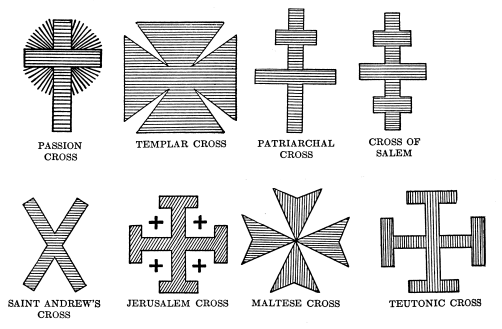
Templar Cross Symbolism,
Roots in Christianity
The Greek Cross, colored in red tincture, is displayed with four equal length arms at ninety-degree angles. This form is one of the oldest forms of the cross to appear in history. Many ancient religions, including the Hebrews revered this form of the cross as a symbol of the Almighty or everlasting life. The symbolic attributes of the Greek cross are taught in the Illustrious Order of the Red Cross.
The Maltese Cross is formed with white spreading arms, with a deep notch in each arm. This cross is exclusively associated with the Knights of St. John, or Knights of Malta. The eight points formed by the geometry of the arms are emblematic of the Beatitudes (“Blessed are the ….”) and the languages into which the Order was originally divided.
The Latin (or Passion) Cross is considered to be the shape of the cross upon which Jesus was crucified. This Cross, portrayed with the Crown (Crown of Victory) form the emblem of the Order. Its symbolism is explained in the ceremonies of the Order of the Temple. This cross is the insignia of a Knight Templar. When displayed with rays, it is the insignia of either a Commander or Past Commander. Properly, whenever a member signs his name as a Templar, a member should prefix his signature with the Latin cross.
The Cross Patee is formed with spreading arms, closed at the ends. To American Templars, it is known as the Templar Cross. This cross represents the spread of the Gospel to the four corners of the Earth. It was the symbol of the original Knights Templar. Traditionally, the cross arms should spread with a curve, as worn by English Templars. In the United States it is typically depicted in the form of four equilateral triangles meeting at a single point in the center. The officers of a Grand Commandery wear a scarlet Templar cross. A Templar Cross in purple tincture denotes a Past Grand Commander.
The Patriarchal Cross is an upright pale, crossed by two bars. This cross displayed in purple is the insignia of the officers of the Grand Encampment. Although there are no references to this particular cross in the ritual, it is regarded as being representative of Archepiscopal rank in the Church for many ages; therefore it is symbolic of high rank in the Order. In Templar correspondence, this cross is traditionally prefixed to the signature of either a Preceptor (Commander) or Past Preceptor.
The Purple Cross of Salem is a three-barred cross. This cross is another ecclesiastic cross, similar in form to a Papal Cross, signifying the ultimate rank of the wearer. This cross is worn as the insignia of the Most Eminent Grand Master of the Grand Encampment and Past Grand Masters.
Other symbols with their individual significance are depicted on the associated banners, including the Baldric, the Sword, the Spur, and the Jewels of rank of the Officers’.
The color of Templary is white, symbolizing purity as did the vestments of the ancient Templars.
The Altar is located in the Prelates Apartment, adjoining the asylum, as opposed to being within the Templar asylum. The Bible is displayed on a small pedestal in front of the Prelates station in the asylum. The Bible is never closed, symbolizing continual light being shed along with Divine guidance to all Templars.
Appropriately, the American Flag is located in the East.
